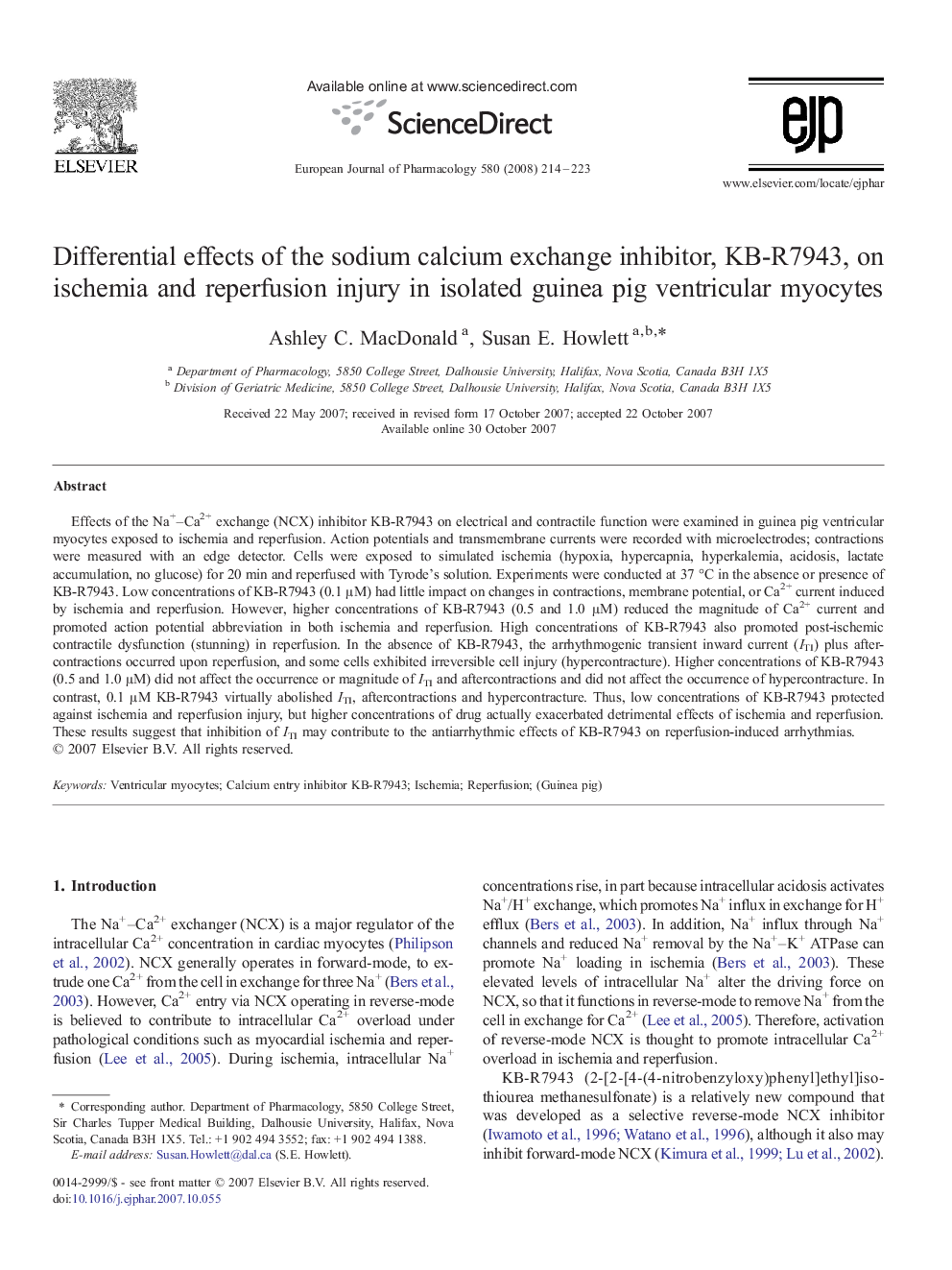| Article ID | Journal | Published Year | Pages | File Type |
|---|---|---|---|---|
| 2535650 | European Journal of Pharmacology | 2008 | 10 Pages |
Effects of the Na+–Ca2+ exchange (NCX) inhibitor KB-R7943 on electrical and contractile function were examined in guinea pig ventricular myocytes exposed to ischemia and reperfusion. Action potentials and transmembrane currents were recorded with microelectrodes; contractions were measured with an edge detector. Cells were exposed to simulated ischemia (hypoxia, hypercapnia, hyperkalemia, acidosis, lactate accumulation, no glucose) for 20 min and reperfused with Tyrode's solution. Experiments were conducted at 37 °C in the absence or presence of KB-R7943. Low concentrations of KB-R7943 (0.1 μM) had little impact on changes in contractions, membrane potential, or Ca2+ current induced by ischemia and reperfusion. However, higher concentrations of KB-R7943 (0.5 and 1.0 μM) reduced the magnitude of Ca2+ current and promoted action potential abbreviation in both ischemia and reperfusion. High concentrations of KB-R7943 also promoted post-ischemic contractile dysfunction (stunning) in reperfusion. In the absence of KB-R7943, the arrhythmogenic transient inward current (ITI) plus aftercontractions occurred upon reperfusion, and some cells exhibited irreversible cell injury (hypercontracture). Higher concentrations of KB-R7943 (0.5 and 1.0 μM) did not affect the occurrence or magnitude of ITI and aftercontractions and did not affect the occurrence of hypercontracture. In contrast, 0.1 μM KB-R7943 virtually abolished ITI, aftercontractions and hypercontracture. Thus, low concentrations of KB-R7943 protected against ischemia and reperfusion injury, but higher concentrations of drug actually exacerbated detrimental effects of ischemia and reperfusion. These results suggest that inhibition of ITI may contribute to the antiarrhythmic effects of KB-R7943 on reperfusion-induced arrhythmias.
